What Is Scanning Microscope?
Scanning microscopes are powerful tools that have revolutionized the field of microscopy, allowing scientists and researchers to observe and analyze the surface structures of materials at incredibly high resolutions. These instruments are essential in various fields, including materials science, biology, and nanotechnology. In this article, we will delve into the different types of scanning microscopes, their working principles, applications, and the advantages they offer over traditional optical microscopes.
Types of Scanning Microscopes

Scanning microscopes can be broadly categorized into several types, each with its unique working principle and application areas. The most common types include:
1. Scanning Electron Microscope (SEM)
2. Scanning Tunneling Microscope (STM)
3. Atomic Force Microscope (AFM)
4. Scanning Near-Field Optical Microscope (SNOM)
Scanning Electron Microscope (SEM)

The Scanning Electron Microscope (SEM) uses a focused beam of electrons to scan the surface of a specimen. The electrons interact with the atoms in the sample, producing various signals that can be detected and used to form an image. SEMs are known for their high resolution and depth of field, making them ideal for examining the surface morphology and composition of materials.
Applications:
- Material science for analyzing surface structures and compositions.
- Biology for studying cell surfaces and microorganisms.
- Semiconductor industry for inspecting integrated circuits and microchips.
Advantages:
- High resolution and magnification.
- Ability to analyze the composition of materials using energy-dispersive X-ray spectroscopy (EDS).
Scanning Tunneling Microscope (STM)

The Scanning Tunneling Microscope (STM) operates on the principle of quantum tunneling. A sharp metal tip is brought very close to the surface of a conductive or semi-conductive sample. When a voltage is applied, electrons tunnel between the tip and the sample, creating a tunneling current that is highly sensitive to the distance between the tip and the surface. By scanning the tip across the surface, a detailed topographical map can be generated.
Applications:
- Nanotechnology for manipulating and imaging individual atoms and molecules.
- Surface science for studying the atomic structure of materials.
Advantages:
- Atomic resolution.
- Ability to manipulate individual atoms and molecules.
Atomic Force Microscope (AFM)

The Atomic Force Microscope (AFM) uses a cantilever with a sharp tip to scan the surface of a sample. As the tip moves across the surface, it experiences forces due to the interactions between the tip and the sample. These forces cause the cantilever to deflect, and this deflection is measured using a laser beam reflected off the back of the cantilever. The AFM can operate in various modes, including contact, non-contact, and tapping mode, each providing different types of information about the sample.
Applications:
- Material science for measuring surface roughness and mechanical properties.
- Biology for imaging and manipulating biological molecules and cells.
- Nanotechnology for characterizing nanostructures.
Advantages:
- High resolution in three dimensions.
- Ability to measure mechanical properties such as stiffness and adhesion.
Scanning Near-Field Optical Microscope (SNOM)
The Scanning Near-Field Optical Microscope (SNOM) combines the principles of optical microscopy and scanning probe microscopy. It uses a sharp tip to scan the surface of a sample while simultaneously illuminating it with light. The tip is small enough to confine the light to a region smaller than the wavelength of light, allowing for imaging beyond the diffraction limit of conventional optical microscopes.
Applications:
- Nanophotonics for studying optical properties at the nanoscale.
- Material science for characterizing optical properties of materials.
- Biology for imaging biological samples with high spatial resolution.
Advantages:
- High spatial resolution beyond the diffraction limit.
- Ability to study optical properties at the nanoscale.
Working Principles
The working principles of scanning microscopes vary depending on the type, but they all involve scanning a probe or beam across the surface of a sample and detecting the interactions between the probe and the sample. These interactions can include electron scattering, tunneling currents, atomic forces, or optical signals, which are then used to generate high-resolution images or maps of the sample's surface.
Applications
Scanning microscopes have a wide range of applications across various fields:
1. Material Science:
- Characterizing surface morphology and composition.
- Analyzing mechanical properties such as hardness and elasticity.
- Studying the effects of treatments and coatings on materials.
2. Biology:
- Imaging cell surfaces and subcellular structures.
- Studying the interactions between biological molecules.
- Investigating the mechanical properties of biological tissues.
3. Nanotechnology:
- Manipulating and imaging individual atoms and molecules.
- Characterizing nanostructures and nanomaterials.
- Developing and testing nanoscale devices.
4. Semiconductor Industry:
- Inspecting integrated circuits and microchips.
- Analyzing defects and failures in semiconductor devices.
- Ensuring quality control in manufacturing processes.
Advantages Over Traditional Optical Microscopes
Scanning microscopes offer several advantages over traditional optical microscopes:
1. Higher Resolution:
- Scanning microscopes can achieve much higher resolutions than optical microscopes, allowing for the observation of features at the atomic or molecular level.
2. Three-Dimensional Imaging:
- Techniques like AFM provide three-dimensional topographical maps of surfaces, offering more detailed information about the sample.
3. Versatility:
- Scanning microscopes can be used to study a wide range of materials, including metals, semiconductors, polymers, and biological samples.
4. Quantitative Analysis:
- Many scanning microscopes can provide quantitative information about the sample, such as composition, mechanical properties, and optical properties.
Scanning microscopes are indispensable tools in modern scientific research and industry. Their ability to provide high-resolution images and detailed information about the surface properties of materials has made them essential in fields ranging from materials science to biology and nanotechnology. By understanding the different types of scanning microscopes, their working principles, and their applications, researchers can choose the most appropriate tool for their specific needs, leading to new discoveries and advancements in technology.




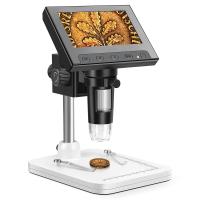
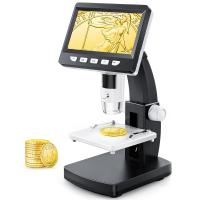
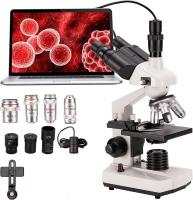
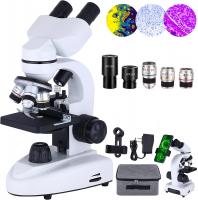



















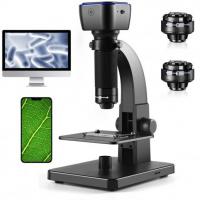












There are no comments for this blog.